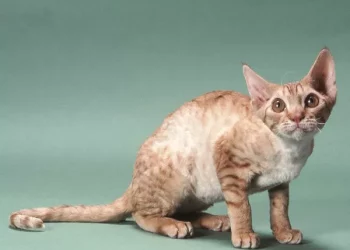Akita dogs are renowned for their majestic presence, loyalty, and distinctive personalities. As with any dog breed, an Akita’s body language, including the position of their tail, can reveal valuable insights into their emotions and well-being. Among the various tail positions an Akita may display, a downward tail often captures the attention of pet owners. In this extensive article, we will delve deeper into the significance of an Akita’s tail being down, exploring the possible meanings behind this posture and how it can reflect the dog’s mood and behavior.
Understanding Akita Tail Language:
The tail of an Akita serves as a vital tool for communication, with its position offering visual cues about the dog’s emotional state. Naturally thick and typically carried high when in a neutral or confident state, an Akita’s tail can convey a range of emotions and physical conditions through its downward position.
-
Submissive or Relaxed Posture:
One interpretation of a downward tail in an Akita is a submissive or relaxed posture. When the tail is down without being tucked between the legs, it may indicate a state of calmness and contentment. In such instances, the Akita feels at ease and comfortable in its environment, displaying a non-threatening and peaceful demeanor.
-
Uncertainty or Nervousness:
A downward tail position can also signify feelings of uncertainty or nervousness in an Akita. In unfamiliar or stressful situations, such as meeting new people, encountering loud noises, or being in an unfamiliar environment, the Akita may lower its tail. A slightly lowered tail, coupled with other body language cues such as ears pulled back or avoidance behavior, suggests that the dog is unsure or apprehensive.
-
Fear or Anxiety:
In some cases, a heavily lowered or tucked tail can indicate fear or anxiety in an Akita. When a dog is afraid, its tail may be held tightly against the body or even tucked between the hind legs. This defensive response indicates heightened stress or discomfort. It is crucial to address the underlying cause of fear or anxiety to help the Akita feel safe and secure.
-
Pain or Physical Discomfort:
A downward tail position can also be an indicator of physical discomfort or pain in an Akita. Dogs may display this posture when experiencing discomfort in their tail, spine, or hindquarters. Observing other signs of pain, such as limping, reluctance to move, or changes in appetite or behavior, is essential. If persistent physical discomfort is suspected, consulting a veterinarian is advised.
-
Illness or Injury:
In certain cases, an Akita’s tail may droop or hang down due to illness or injury. Dogs may exhibit a lowered tail as a general sign of not feeling well. If the downward tail position is accompanied by additional symptoms such as lethargy, loss of appetite, or abnormal behavior, it may indicate an underlying health issue. Seeking prompt medical attention is recommended to diagnose and address any potential health concerns.
Conclusion:
An Akita’s tail position serves as a window into their emotional state and overall well-being. While a downward tail may carry different meanings depending on the context and accompanying body language, it is crucial to consider the dog’s overall behavior and environment. Paying attention to other cues such as facial expressions, body posture, and vocalizations can provide a more comprehensive understanding of an Akita’s emotional state. Additionally, consulting with a professional dog behaviorist or veterinarian can offer expert guidance in interpreting and addressing any concerns related to an Akita’s tail position. By fostering a deep understanding of our loyal Akita companions, we can ensure their happiness, comfort, and overall quality of life. With patience, compassion, and diligent observation, we can strengthen the bond between humans and these magnificent dogs.
Recommended Reading:

























